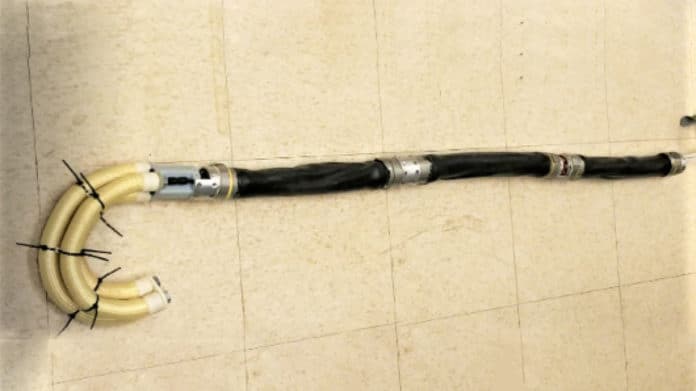GE Research’s Robotics and Autonomy team has developed an innovative, autonomous soft robot design adapted from its famed autonomous giant earthworm tunneling robot developed as part of the Defense Advanced Research Agency’s (DARPA) Underminer Program.
Dubbed Pipe-worm (Programmable Worm for Irregular Pipeline Exploration), this updated autonomous soft robot design has cockroach-like whiskers and powerful fluid-powered muscles to give it extreme flexibility and perception capabilities.
The team recently demonstrated the Pipe-worm robot at its research campus in Niskayuna. The demonstration showed the robot’s potential for military applications envisioned through the Underminer program. The robot is also ideal for autonomous monitoring, inspection, repair, and even mapping of oil and gas pipelines or underground municipal water and sewer systems.
During the demonstration, the Pipe-worm successfully traveled over 100 meters of pipe while navigating many turns, diameter, and altitude changes. It even moved through pipes without disrupting normal operations and even against fast-flowing liquid. The robot’s powerful artificial muscles make it suitable for heavy-duty jobs such as the cleaning of solid waste deposits called “fatbergs.” The giant clumps of solid waste are plaguing municipal water and sewer systems in the US and around the world. Many innovative technologies are being brought to bear to deal with the problem.
“This AI-enabled autonomous robot has the ability to inspect and potentially repair pipelines all on its own, breaking up the formation of solid waste masses like fatbergs that are an ongoing issue with many of our nation’s sewer systems,” said Deepak Trivedi, a soft robotics expert at GE Research who led the development of Pipe-Worm. “We’ve added cockroach-like whiskers to its body that gives it greatly enhanced levels of perception to make sharp turns or negotiate its way through dark, unknown portions of a pipeline network.”
The combination of artificial intelligence and cockroach-like whiskers enables GE’s Pipe-Worm to automatically identify turns, elbows, junctions, pipe diameter, pipe orientation, and other pipeline characteristics in great detail. Using this information, the robot can then create a map of a given pipeline network in real-time.
The GE team is now exploring other autonomous inspection and repair applications like jet engines and power turbines in the aviation and power sectors. Also, the Pipe-worm robot could be used to inspect conduits for underground fiber-optic cables that connect billions of people and machines to the Internet online.
